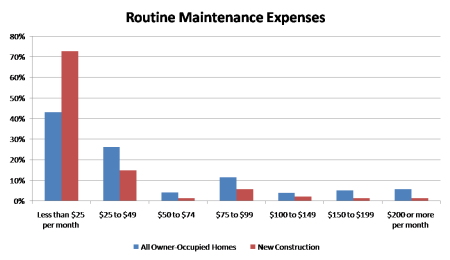Normally an individual who sold his or her home through a short sale or lost it in a foreclosure would have to wait 36 months to purchase a home again ( primary residence ) with an FHA fixed-rate mortgage. However, the FHA Back to Work Program allows a buyer to purchase a new home just 12 months after a foreclosure, short sale or a deed in lieu of foreclosure. The program -- which was announced in 2013, and extended through Sept. 30, 2016 -- aims to fulfill a lofty goal: offering families a second chance at homeownership.
In order to qualify you'll need to demonstrate the financial problems that caused you to forfeit your prior home.
How You Can Qualify: The FHA Back to Work Program requires participants show that the loss of their previous home was truly due to circumstances beyond their control. Participants must demonstrate that since the financial calamity, the have re-established their income and have paid their other obligations as agreed. Unfortunately, the program does not consider previous loan modifications, adjustable-rate loan recasting, inability to rent a previous income property, or even divorce to be sufficient enough reasons to qualify.
Loss of Income: Participants must show a 20 percent loss of income or more for at least six consecutive months leading up to the event to qualify. For example, if the previous foreclosure, short sale or deed in lieu happened due to loss of income, you would meet this requirement if your pre-event income was $100,000, and dropped to $80,000 or lower for six consecutive months beforehand.
How to support your claim: The lender with whom you're applying will order a verification of employment. The verification of employment would support the dates of when the loss of income occurred. Other supporting documentation would include lower year-to-date earnings with pay stubs within the dates your income dropped. W-2s and/or tax returns that show lower reported wages for that time frame will also meet the FHA requirement.
Full Recovery With Satisfactory Credit: FHA wants you to demonstrate that you're back on both feet. You'll need to show that since the previous financial calamity, you have re-established your income and have paid your other obligations as agreed.
How to support your claim: Participants will need to have a credit score of at least 640, or to have gone through a HUD-approved counseling agency related to homeownership and residential mortgage loans. Tip: A 12-month favorable credit history on your other debt obligations would support the credit score requirement.
Missing the FHA Second-Chance Boat: These FHA requirements draw a clear line in the sand by asking for specific related documentation that led to the loss of the home. If a buyer who had a foreclosure, short sale or deed in lieu of foreclosure is unable to provide a clear, documented 20 percent loss of income for six consecutive months leading up to the event, it will be difficult for them to get qualified for this program. Here's why: The nature of lending in today's credit environment involves revealing all aspects of the borrower's credit, debt, income and assets. A simple letter of explanation detailing the circumstances that led to the event is simply not enough; for this program, supporting documentation needs to corroborate the story.
Post-Foreclosure Timelines
If the short sale, foreclosure or deed in lieu of foreclosure took place within the last 12 to 36 months ... Then a documentable loss of income of 20 percent or more for six months remains in effect.
If the short sale, foreclosure or deed in lieu of foreclosure took place 36 months ago or longer ... Then the previous loss of income documentation threshold does not apply, and a borrower would be eligible for a new FHA loan, as long as the credit, debt, income and assets are acceptable with the lender. A prior home loss does not automatically preclude your ability to qualify.
If the short sale, foreclosure or deed in lieu of foreclosure took place 36 months ago or longer... Then the lending requirements for other types of loans are as follows:
- Conventional loan -- You're eligible with 20 percent down (to avoid private mortgage insurance) seven years after the event, or three years after with documentable extenuating circumstances and a lender exception;
- VA loan -- 36 months out from the date of the event;
- USDA loan -- 36 months out from the date of the event;
- Jumbo mortgage (this is for loan amounts that exceed the maximum loan limit for a conventional loan in your area) -- most lenders require seven years from a foreclosure or a deed in lieu, for a short sale they want 30 percent down and 36 months out or longer.
If you, or someone you know is considering Buying or Selling a Home in Columbus, Ohio please contact The Opland Group. We offer professional real estate advice and look forward to helping you achieve your real estate goals!
The Opland Group Specializes in Real Estate Sales, Luxury Home Sales, Short Sales in; Bexley 43209 Columbus 43201 43206 43214 43215 Delaware 43015 Dublin 43016 43017 Gahanna 43219 43230 Grandview Heights 43212 Hilliard 43026 Lewis Center 43035 New Albany 43054 Pickerington Powell 43065 Upper Arlington 43220 43221 Westerville 43081 43082 Worthington 43235










